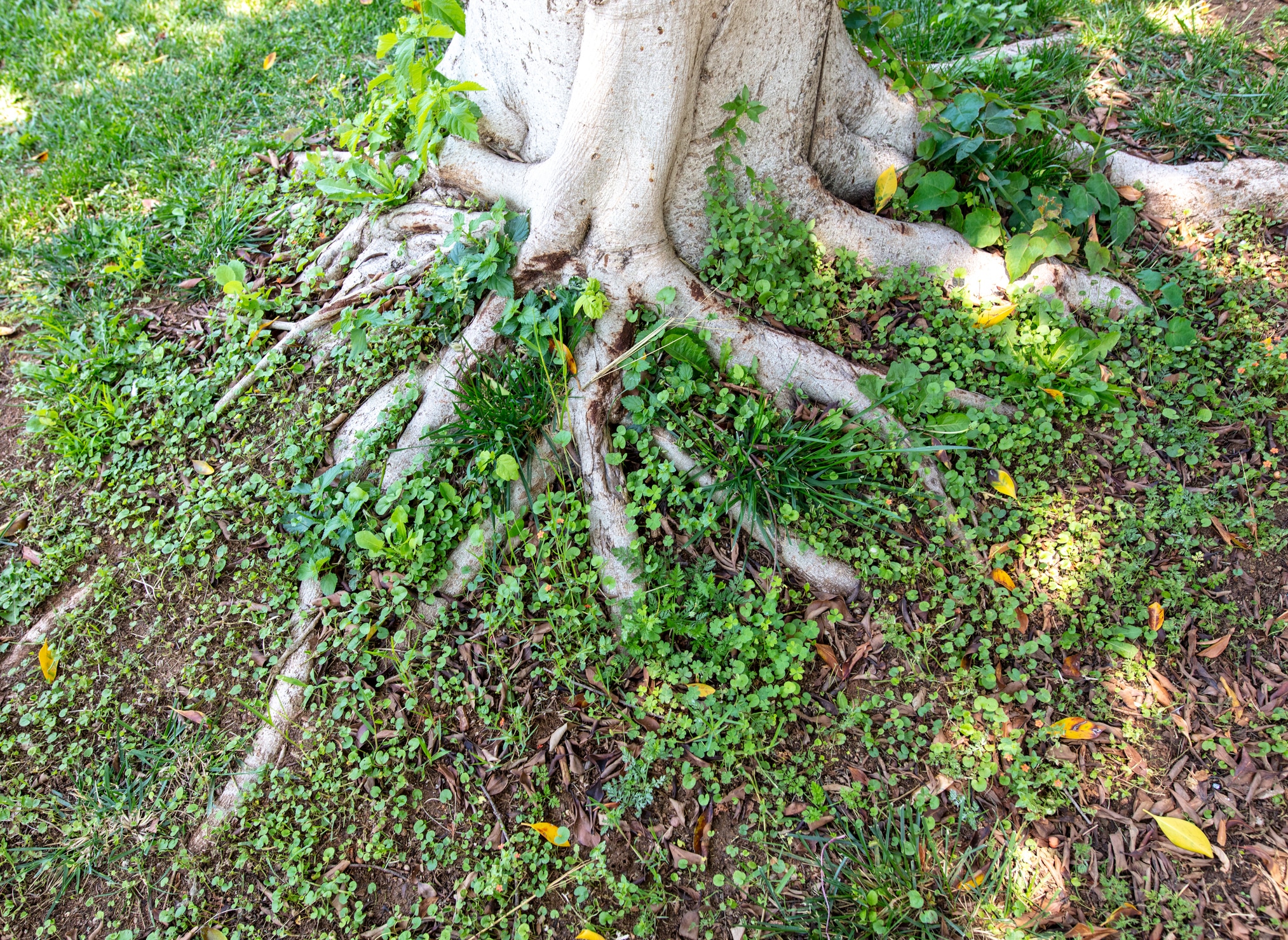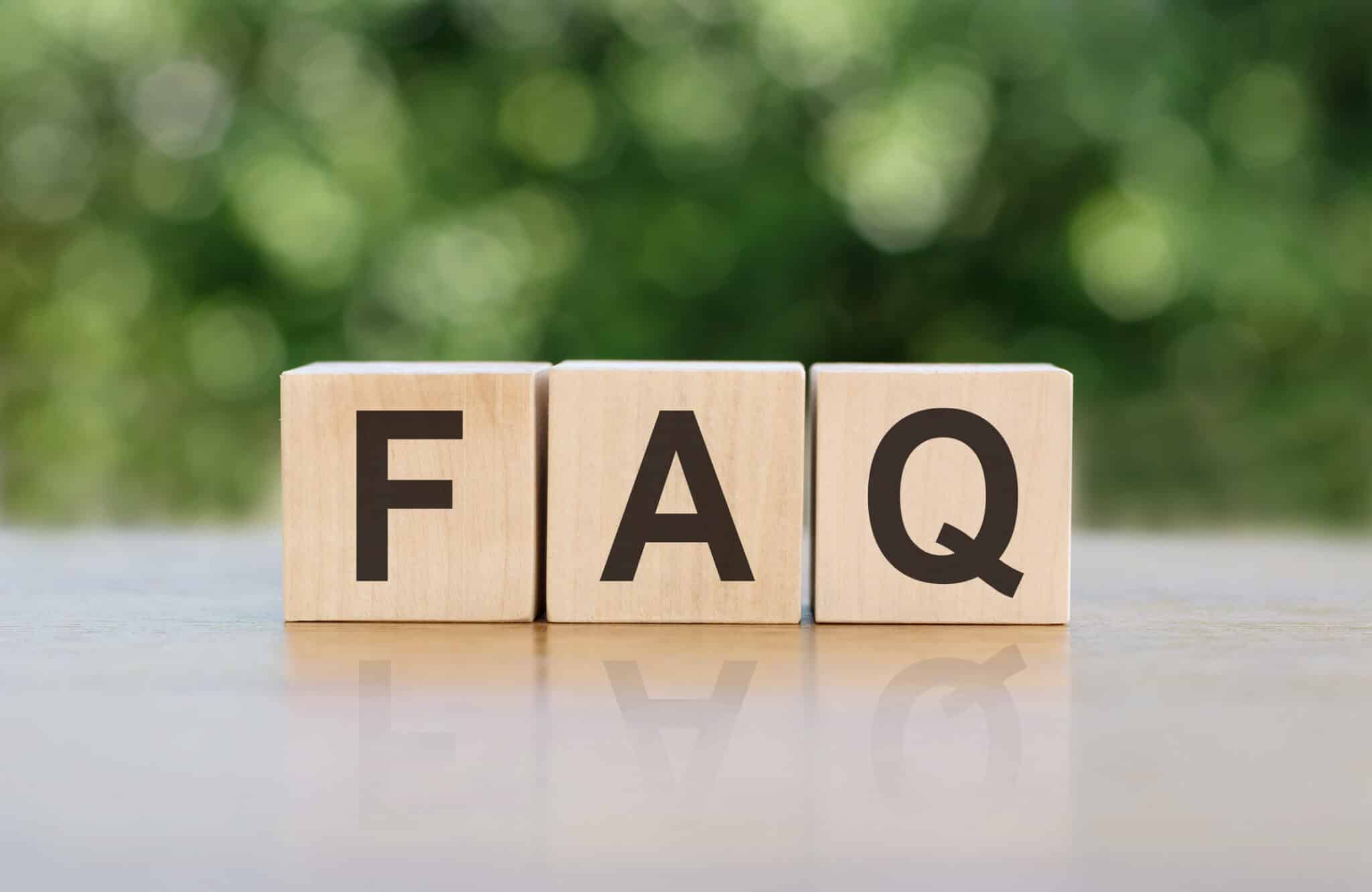Did you know that the roots of trees in Hawaii do more than just keep them from tipping over? Tree root systems are like underground superheroes, working hard to support not only the tree but also the land around it.
Here in Oahu and cities like Honolulu, these roots face unique challenges from volcanic soils, tropical storms, and salty coastal areas. In this blog, we’ll dive into the fascinating world of tree root systems, uncovering how they work, adapt, and support the stunning landscapes we love. Let’s dig in!
Table of Contents
ToggleWhat Are Tree Root Systems?
Tree root systems are the hidden lifeline of every tree, keeping it stable and delivering everything it needs to thrive. These essential systems ensure trees stand tall, absorb water and nutrients, and adapt to environmental changes.
In Hawaii, tree root systems take on even greater importance, overcoming challenges like volcanic soils, heavy rains, and salty coastal conditions. Tree root systems don’t just stay beneath the tree; they spread wide, dive deep, and work tirelessly to sustain life.

Types of Tree Root Systems Common in Hawaii
Hawaii’s trees have developed fascinating root systems to thrive in the islands’ unique environment. These systems come in three main types: taproot, fibrous, and adventitious roots. Each has a special way of growing and plays an important role in keeping trees healthy and strong.
Taproot System
Taproots are deep-growing roots that reach straight down into the soil, anchoring trees firmly in place. This type of root system is great for loose volcanic soils because it allows trees to find water and nutrients far below the surface.
Trees like koa and coconut trees are perfect examples of taproot systems in Hawaii. These deep roots are essential for stability, especially in areas prone to strong winds or shifting ground.
Fibrous Root System
Fibrous roots form a shallow, wide-spreading network close to the surface, making them perfect for areas with lots of rain or surface water. This type of root system is common in trees like breadfruit and hala (pandanus), which are often found in wetter parts of the islands.
Fibrous roots are excellent at preventing soil erosion, which is especially important in Hawaii’s hilly and rainforest areas. They’re also great at quickly absorbing water after heavy rains, ensuring the tree stays hydrated and healthy.
Adventitious Roots
Adventitious roots grow from unusual places, like the stems or branches of a tree, and are a common sight in banyans and mangroves. In Hawaii, banyan trees in urban areas like Honolulu use these roots for extra support as they grow wide and sprawling.
Mangroves in coastal areas also rely on adventitious roots to stabilize themselves in muddy or salty conditions. These roots are a unique adaptation that helps trees survive in challenging environments where typical root systems might not be enough.
Key Functions of Tree Root Systems
Tree root systems are more than just anchors; they are essential for a tree’s survival and the health of the surrounding environment. In Hawaii, these root systems play an even more critical role, adapting to the islands’ unique challenges like strong winds, heavy rainfall, and steep terrains.
Anchoring Trees Against Strong Winds
Hawaii’s tropical storms and trade winds are no match for a well-anchored tree. Deep-growing taproots and wide-spreading fibrous roots hold trees firmly in place, even during high winds.
This is especially important for trees growing in exposed areas or on hillsides where the soil might be loose. The stability these roots provide ensures that trees in urban areas and natural landscapes can withstand harsh weather conditions.
Absorbing Water and Nutrients
Roots act like the tree’s personal water and nutrient delivery system, pulling in what the tree needs to grow. In Hawaii, where the climate ranges from wet rainforests to dry coastal plains, root systems adapt to access water in different ways.
Shallow fibrous roots soak up surface water in rainy areas, while deep taproots search for moisture in drier regions. Without this essential function, trees wouldn’t survive Hawaii’s diverse microclimates.
Tips for Supporting Soil Health
Tree root systems are essential for maintaining healthy, stable soil. Here’s how to keep your soil fertile and erosion-resistant:
- Plant Trees on Slopes: Hold the soil in place and reduce the risk of erosion during heavy rains, especially in hilly areas. Tree root systems act as natural anchors, stabilizing loose or shifting soil.
- Use Organic Mulch: Enrich the soil with nutrients as it decomposes. Mulch also helps regulate moisture, prevent weed growth, and improve soil texture for better root development.
- Diversify Your Trees: Promote a variety of root systems that enhance aeration, water flow, and overall soil health. Different root types work together to prevent soil compaction and improve its ability to absorb water.
- Avoid Compacting Soil: Limit heavy equipment and foot traffic in root zones to ensure roots have access to the air and water they need. Compacted soil can stunt tree growth and weaken their root systems.
- Choose Native Species: Opt for trees with adaptable root systems suited to Hawaii’s environment. These trees naturally support soil stability and fertility while requiring less maintenance.
Taking these steps will not only protect Hawaii’s stunning landscapes but also ensure your trees remain strong and healthy.
How Tree Root Systems Adapt to Hawaii’s Environment
Tree root systems are incredibly adaptable, allowing trees to survive in Hawaii’s diverse and sometimes challenging environments. Whether dealing with porous volcanic soils, heavy rains, or coastal conditions, roots adjust their growth patterns to ensure survival.
Volcanic Soils
Hawaii’s volcanic soils are often nutrient-poor and porous, making it hard for trees to get what they need. Roots respond by spreading wide to capture as many nutrients as possible or growing deep to access moisture below the surface.
Trees like ʻōhiʻa are especially good at thriving in these tough conditions. This adaptability is crucial for survival in areas where the soil may not naturally support lush growth.
Heavy Rainfall
In wetter regions, roots need to manage constant moisture to avoid problems like rot or drowning. Fibrous root systems, which spread close to the surface, are perfect for quickly absorbing water and preventing erosion.
Trees like breadfruit and hala thrive in these areas, where their shallow roots help stabilize the soil and keep the land intact. These roots are essential for managing waterlogged conditions during frequent rains.
Drier Climates
On the drier sides of the islands, like leeward areas, roots adapt by growing deeper to reach underground water sources. This makes it possible for trees to survive even when rainfall is limited.
Deep-rooted trees, such as kiawe, excel in these conditions by finding moisture far below the surface, ensuring their survival during dry spells.
Coastal Adaptations
Coastal trees face additional challenges like salt exposure and unstable soil. Adventitious roots in trees like mangroves help them stabilize in sandy or muddy conditions while also tolerating salty water.
These roots not only support the tree but also protect the coastline from erosion, playing a critical role in maintaining Hawaii’s coastal ecosystems.
Common Challenges for Root Systems in Hawaii
Tree root systems in Hawaii face several challenges, both natural and human-made. These issues can affect the health of the tree and the environment around it, leading to weakened growth or even tree loss.
Root Rot
Excessive moisture in poorly drained soils can lead to root rot, a condition that weakens and eventually kills roots. In Hawaii’s wetter areas, like valleys and rainforests, trees are especially at risk.
Over time, the roots become unable to absorb water and nutrients, leaving the tree vulnerable. Proper drainage and avoiding overwatering are crucial to prevent this issue.
Soil Compaction
In urban and developed areas, soil compaction is a frequent problem. Heavy machinery, foot traffic, and construction can compress the soil, restricting the flow of air and water to the roots.
This prevents roots from growing properly and can leave trees weakened. Loosening the soil and creating aerated spaces can help roots recover and thrive.
Invasive Plants
Hawaii’s native trees often face stiff competition from invasive species like strawberry guava and albizia. These fast-growing plants can outcompete native trees for water, nutrients, and space, choking out their root systems.
Managing invasive plants is critical to protecting Hawaii’s ecosystems and allowing native root systems to flourish.
Damage From Human Activity
Construction, landscaping, and even simple gardening can cause accidental damage to tree roots. Cutting roots during building projects or digging too close to trees can disrupt their stability and health. Protecting root zones and planning around tree roots during any activity can help avoid this type of harm.
Caring for Tree Root Systems
Proper tree care is essential to keeping tree root systems healthy and ensuring they can support the trees they belong to. Hawaii’s unique environment means root care requires thoughtful attention to factors like water management, soil health, and protection from physical damage.
Proper Irrigation
Watering trees correctly is key to promoting healthy roots, especially in areas with varying rainfall. Overwatering in wet regions can lead to root rot while under-watering in drier areas can stress roots.
Adjust irrigation schedules based on the specific environment, ensuring that trees in drier zones receive deep, less frequent watering, while those in wetter areas get just enough to thrive.
Mulching
Adding a layer of mulch around the base of trees helps retain moisture, regulate soil temperature, and improve soil health. Using natural materials like coconut husks or other local mulch options can enhance the soil while protecting roots from drying out. Mulch also reduces weed growth, which can compete with tree roots for resources.
Aeration
Loosening compacted soil around trees allows roots to breathe and grow more effectively. This is especially important in urban areas where foot traffic and construction can lead to hardened soil. Aerating the soil improves the flow of water and nutrients to the roots, promoting stronger, healthier trees.
Avoiding Root Damage
Protecting roots from harm during construction or landscaping projects is critical. Avoid cutting or digging too close to the tree, and use root barriers if necessary to guide roots away from structures. Being mindful of root zones and working around them helps ensure trees remain stable and healthy for years to come.
Tree Root Systems and Landscaping
When planning a landscape, understanding tree root systems is crucial to creating a healthy, sustainable space. Roots can impact everything from plant health to nearby structures, so it’s essential to consider their growth patterns and needs.
Choosing the Right Trees
Selecting trees that thrive in Hawaii’s conditions is the first step in successful landscaping. Native species like ʻōhiʻa or kukui are great options, as they are well-adapted to local soils, climate, and rainfall patterns.
These trees tend to have root systems that work in harmony with the environment, making them easier to maintain.
Spacing for Root Growth
Proper spacing is vital to giving roots enough room to spread without interfering with buildings, pavements, or other plants. Planting trees too close to structures can lead to issues with invasive roots damaging foundations or sidewalks.
Ensuring enough space for root growth helps trees grow stronger and reduces the need for costly repairs later.
Enhancing Soil Health
Healthy soil means healthy roots, so adding organic matter like compost or mulch is a simple way to support tree growth. This practice enriches the soil with nutrients and improves its structure, making it easier for roots to expand. Regular soil care is an essential part of creating a thriving landscape.
Using Root Barriers
For trees with aggressive root systems, installing root barriers can help prevent damage to surrounding structures. These barriers guide roots downward or away from sensitive areas, protecting pavements, foundations, and nearby plants. It’s a simple solution to keep roots in check without harming the tree.
Tree Root Systems and Their Ecological Role in Hawaii
Tree root systems aren’t just important for individual trees—they play a vital role in supporting Hawaii’s ecosystems. These underground networks contribute to soil stability, water management, and even the fight against climate change.
Preventing Soil Erosion
Tree roots act as nature’s anchors, holding soil in place and preventing erosion. This is especially critical in areas with steep slopes or heavy rainfall, where loose soil could wash away.
In Hawaii, tree roots help maintain the stability of hillsides and protect vulnerable coastal zones from being eroded by the sea.
Supporting Biodiversity
Roots create habitats for countless organisms, from tiny insects to beneficial microorganisms. In Hawaii, where biodiversity is rich and unique, tree roots provide shelter and resources for native species.
By fostering these underground ecosystems, roots help maintain a healthy balance in the natural environment.
Preserving Groundwater
Tree roots allow rainwater to seep into the soil, replenishing groundwater reserves instead of letting it run off.
This process is vital in maintaining Hawaii’s freshwater supply, especially in areas that depend on aquifers. By managing water flow, roots play a key role in the islands’ water cycle.
Carbon Sequestration
Trees with extensive root systems store carbon both above and below ground, helping reduce greenhouse gases in the atmosphere.
In Hawaii, where the effects of climate change are already visible, this carbon storage is crucial. By planting and protecting trees, we can enhance this natural ability to combat global warming.
Protect Your Trees and Landscape Today with Mana Home Services!
Tree root systems are vital to keeping your landscape healthy and beautiful, but they need the right care to thrive. At Mana Home Services, we specialize in preserving and maintaining trees across Honolulu and Oahu, ensuring their root systems stay strong and functional.
Whether you’re tackling landscaping projects or addressing root challenges, our team is here to help. Contact us today to keep your trees thriving!
Frequently Asked Questions (FAQ)
How far do tree roots spread in Hawaii?
Tree root systems often extend far beyond the tree’s canopy, sometimes up to two or three times its width. In Hawaii, these systems adapt to the unique environment by spreading wide or deep to access water and nutrients. This flexibility helps tree root systems thrive in various conditions, from sandy coasts to rocky volcanic soils.
Can invasive roots damage my home’s foundation?
Yes, certain tree root systems can grow aggressively, causing damage to foundations, sidewalks, and pipes. Choosing trees with non-invasive root systems and planting them far from structures can prevent this. Root barriers are also effective for directing growth while maintaining the health of the tree.
How can I tell if my tree’s roots are healthy?
Healthy tree root systems are firm, well-anchored, and free from signs of rot or decay. Symptoms like yellowing leaves, a leaning trunk, or poor growth may indicate root problems. If you’re unsure, consulting a professional can help assess the tree’s root system.
What’s the best way to manage root growth near structures?
Properly managing tree root systems starts with selecting trees that are suitable for the space. Plant them far enough from buildings and use root barriers to guide growth away from sensitive areas. Regular inspections and pruning can also keep root systems in check without harming the tree.
Are native trees better for root systems in Hawaii?
Yes, native trees are naturally adapted to Hawaii’s environment, making their tree root systems more compatible with local conditions. They’re easier to care for and less likely to cause issues with soil or surrounding ecosystems. Native trees are a reliable choice for healthy, sustainable landscapes.



